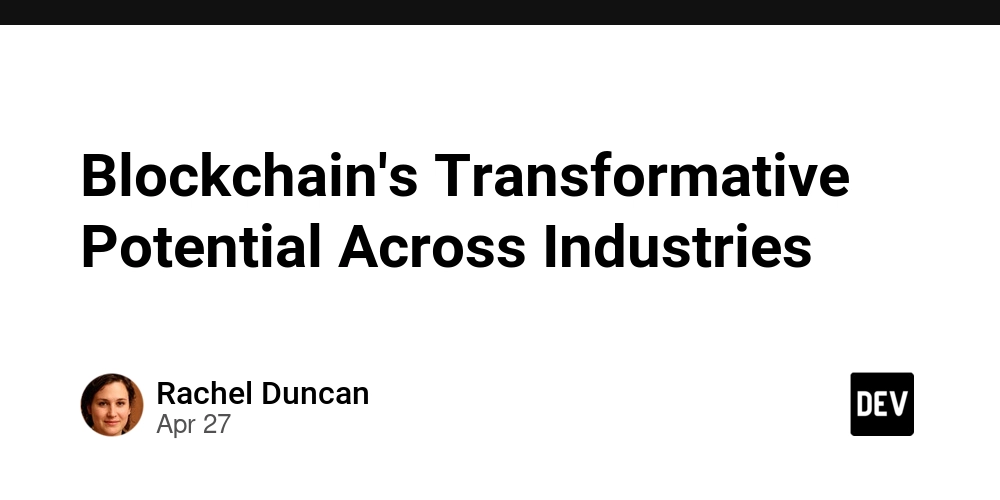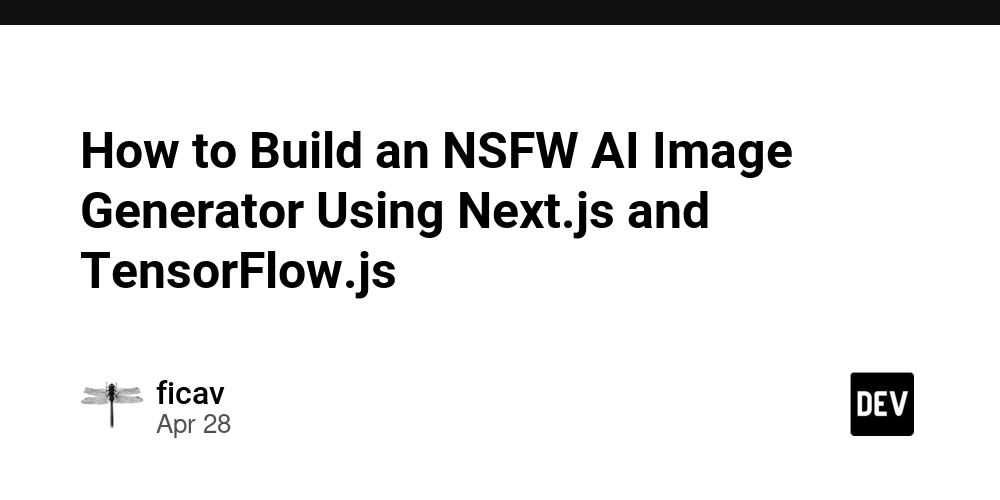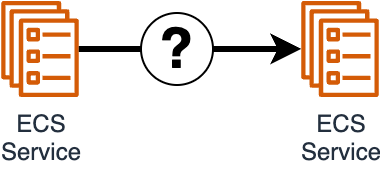Blockchain's Transformative Potential Across Industries
Abstract This post explores how blockchain technology is reshaping diverse industries—from digital media and advertising to decentralized streaming and sustainable practices. We delve into the history, core concepts, key features, and practical applications of blockchain, while also analyzing challenges and uncovering promising future trends. Drawing on insights from reputable sources such as IBM’s blockchain insights, Audius, and Livepeer, as well as discussing the role of NFTs in open source rewards and the evolution of smart contracts, we provide a comprehensive guide designed for both technical experts and curious readers alike. Introduction Blockchain technology has become a transformative force across multiple sectors. With its promise of decentralization, transparency, and enhanced security, blockchain is not only revolutionizing finance but also digital media, advertising, and intellectual property, among others. This post aims to provide a holistic understanding of blockchain’s impact across industries. Whether you are a developer, investor, or simply interested in technology, you will find valuable insights in our discussion of the ecosystem, innovative use cases, and future trends. In this comprehensive guide, we will: Outline the background and context of blockchain technology. Explain core concepts and features with clear examples. Review applications and use cases in various industries. Discuss the challenges that blockchain faces. Predict the future outlook and potential innovations. For more in-depth information, consider visiting our Original Article. Background and Context Blockchain technology first emerged as the backbone of Bitcoin in 2009. Over time, its applications have grown beyond cryptocurrencies to encompass areas such as digital rights management, secure data sharing, and decentralized streaming services. At its core, blockchain is a distributed ledger technology that ensures data integrity, immutability, and transparency. Here are a few key points: Decentralization: No single authority controls the network. Immutable Records: Once recorded, data cannot be tampered with. Enhanced Security: Cryptographic algorithms secure transactions and data. Below is a table summarizing some historical milestones and industry adoption markers: Year Milestone Impact 2009 Bitcoin launch Introduced decentralized digital currency 2014 Introduction of Ethereum Enabled smart contracts and decentralized apps 2017 Rise of Decentralized Finance (DeFi) Revolutionized traditional financial systems 2020 NFT explosion Transformed digital art and media ownership 2023 Enhanced sustainable blockchain practices Addressed environmental concerns The evolving blockchain ecosystem has spurred innovations in numerous domains such as digital advertising, decentralized media platforms like Audius for music streaming and Livepeer for video streaming, as well as the introduction of the Basic Attention Token in advertising. Core Concepts and Features Blockchain technology is built on several fundamental concepts: Decentralization and Distributed Ledgers Rather than relying on a centralized database, blockchain distributes data across a network of computers. This ensures that: Transparency is maintained: Each participant can verify the transactions. Fraud is minimized: Altering any record would require simultaneous changes across multiple nodes. Smart Contracts Smart contracts are self-executing digital contracts with predetermined rules. They are revolutionizing: Agreements and transactions: Automating processes such as payments or asset transfers. Compliance and audits: Ensuring all conditions are met before execution. For more details on smart contracts, visit Smart Contracts on Blockchain. NFTs and Digital Ownership Non-fungible tokens (NFTs) are unique digital assets that manage ownership on the blockchain. They are increasingly used in: Digital art and collectibles: Offering proof of authenticity and ownership. Open source rewards: Incentivizing contributions to open source projects. Learn more about NFTs by reading What are NFTs and Why are NFTs valuable. Sustainable Blockchain Practices An emerging trend involves integrating sustainability into blockchain practices. Numerous projects now focus on lowering energy consumption and carbon footprint. Check out Sustainable Blockchain Practices for guidelines on this front. Key Features: A Quick Overview Here is a bullet list highlighting some of the most critical blockchain features: Transparency: Open ledger for all transactions. Security: Robust cryptographic security measures. Efficiency: Automation of processes via smart contracts. Traceability: Improved audit trails and data integrity. Decentralization: Reduced central control and single point of failure. Applications and Use Cases Blockchain

Abstract
This post explores how blockchain technology is reshaping diverse industries—from digital media and advertising to decentralized streaming and sustainable practices. We delve into the history, core concepts, key features, and practical applications of blockchain, while also analyzing challenges and uncovering promising future trends. Drawing on insights from reputable sources such as IBM’s blockchain insights, Audius, and Livepeer, as well as discussing the role of NFTs in open source rewards and the evolution of smart contracts, we provide a comprehensive guide designed for both technical experts and curious readers alike.
Introduction
Blockchain technology has become a transformative force across multiple sectors. With its promise of decentralization, transparency, and enhanced security, blockchain is not only revolutionizing finance but also digital media, advertising, and intellectual property, among others. This post aims to provide a holistic understanding of blockchain’s impact across industries. Whether you are a developer, investor, or simply interested in technology, you will find valuable insights in our discussion of the ecosystem, innovative use cases, and future trends.
In this comprehensive guide, we will:
- Outline the background and context of blockchain technology.
- Explain core concepts and features with clear examples.
- Review applications and use cases in various industries.
- Discuss the challenges that blockchain faces.
- Predict the future outlook and potential innovations.
For more in-depth information, consider visiting our Original Article.
Background and Context
Blockchain technology first emerged as the backbone of Bitcoin in 2009. Over time, its applications have grown beyond cryptocurrencies to encompass areas such as digital rights management, secure data sharing, and decentralized streaming services. At its core, blockchain is a distributed ledger technology that ensures data integrity, immutability, and transparency. Here are a few key points:
- Decentralization: No single authority controls the network.
- Immutable Records: Once recorded, data cannot be tampered with.
- Enhanced Security: Cryptographic algorithms secure transactions and data.
Below is a table summarizing some historical milestones and industry adoption markers:
| Year | Milestone | Impact |
|---|---|---|
| 2009 | Bitcoin launch | Introduced decentralized digital currency |
| 2014 | Introduction of Ethereum | Enabled smart contracts and decentralized apps |
| 2017 | Rise of Decentralized Finance (DeFi) | Revolutionized traditional financial systems |
| 2020 | NFT explosion | Transformed digital art and media ownership |
| 2023 | Enhanced sustainable blockchain practices | Addressed environmental concerns |
The evolving blockchain ecosystem has spurred innovations in numerous domains such as digital advertising, decentralized media platforms like Audius for music streaming and Livepeer for video streaming, as well as the introduction of the Basic Attention Token in advertising.
Core Concepts and Features
Blockchain technology is built on several fundamental concepts:
Decentralization and Distributed Ledgers
Rather than relying on a centralized database, blockchain distributes data across a network of computers. This ensures that:
- Transparency is maintained: Each participant can verify the transactions.
- Fraud is minimized: Altering any record would require simultaneous changes across multiple nodes.
Smart Contracts
Smart contracts are self-executing digital contracts with predetermined rules. They are revolutionizing:
- Agreements and transactions: Automating processes such as payments or asset transfers.
- Compliance and audits: Ensuring all conditions are met before execution. For more details on smart contracts, visit Smart Contracts on Blockchain.
NFTs and Digital Ownership
Non-fungible tokens (NFTs) are unique digital assets that manage ownership on the blockchain. They are increasingly used in:
- Digital art and collectibles: Offering proof of authenticity and ownership.
- Open source rewards: Incentivizing contributions to open source projects. Learn more about NFTs by reading What are NFTs and Why are NFTs valuable.
Sustainable Blockchain Practices
An emerging trend involves integrating sustainability into blockchain practices. Numerous projects now focus on lowering energy consumption and carbon footprint. Check out Sustainable Blockchain Practices for guidelines on this front.
Key Features: A Quick Overview
Here is a bullet list highlighting some of the most critical blockchain features:
- Transparency: Open ledger for all transactions.
- Security: Robust cryptographic security measures.
- Efficiency: Automation of processes via smart contracts.
- Traceability: Improved audit trails and data integrity.
- Decentralization: Reduced central control and single point of failure.
Applications and Use Cases
Blockchain has real-world applications that stretch across many sectors. Below are two practical examples showcasing its transformative power:
Example 1: Decentralized Media and Advertising
- Digital Media Platforms: Platforms like Audius offer decentralized music streaming while Livepeer changes the video streaming landscape. These platforms enable artists and content creators to retain control over their work and revenue.
- Advertising Evolution: The Basic Attention Token integrates blockchain into the advertising industry by rewarding users for attention while ensuring more secure and transparent ad delivery.
- NFTs and Intellectual Property: NFTs provide a new model for #digitalownership and open source rewards. For instance, the article on The Role of NFTs in Open Source Rewards explains how creators are rewarded for their contributions through blockchain-based tokenization.
Example 2: Smart Contracts in Supply Chain and Finance
- Supply Chain Management: Blockchain’s transparent ledger system can track products at every stage, ensuring authenticity and reducing fraud.
- Financial Services: Smart contracts automate financial transactions and reduce the need for intermediaries in processes such as escrow services or insurance.
- Regulatory Compliance: The transparent nature of blockchain helps in audit trails and building trust in regulated industries.
The practical impact of these applications fosters a new era of trust and efficiency in various sectors. To explore related innovative solutions, check out Scaling Ethereum with Arbitrum: Transforming Blockchain Scalability for a Decentralized Future.
Challenges and Limitations
Despite its promising features, blockchain technology faces several challenges:
Technical and Scalability Challenges
- Energy Consumption: Proof-of-work-based blockchains, in particular, have been criticized for their energy consumption. Although sustainable practices are evolving, energy use remains a concern.
- Scalability: Handling a large number of transactions is still a challenge for many blockchain networks. Issues such as network congestion and high transaction fees need addressing.
- Interoperability: Blockchain ecosystems are often siloed. Achieving seamless integration between different blockchain networks remains a technical challenge.
Regulatory and Adoption Challenges
- Regulatory Uncertainty: Governments and regulators worldwide are still catching up to blockchain technology. Uncertainty in regulation can hinder adoption.
- User Adoption: For blockchain applications to reach mainstream audiences, there must be a balance between decentralization and ease of use.
- Security Risks: Despite robust security measures, blockchain platforms are not immune to vulnerabilities. Smart contract bugs and potential exploits demand continuous audits and updates.
Summary of Key Challenges
Below is a bullet list of major challenges:
- High energy consumption and environmental impact.
- Scalability issues and network congestion.
- Regulatory uncertainty in global markets.
- Security risks, particularly with smart contracts and interoperability.
- Adoption hurdles due to technical complexity for end-users.
Future Outlook and Innovations
As blockchain continues to mature, we can expect significant advancements that will further drive its adoption across industries:
Technological Innovations
- Layer-2 Scaling Solutions: Innovations like rollups and sidechains (including projects on Arbitrum) are expected to improve transaction throughput and reduce costs.
- Enhanced Interoperability: Future platforms may enable seamless integration between different blockchains and traditional systems, improving overall utility.
- Sustainable Practices: With increased focus on lowering energy consumption, blockchain networks are developing eco-friendly consensus mechanisms such as proof-of-stake.
Market and Adoption Trends
- Increased Institutional Adoption: As blockchain proves its potential for transparent and efficient operations, more institutions are likely to integrate blockchain into their supply chain and financial systems.
- Broader NFT Adoption: Beyond digital art, NFTs are being leveraged for virtual real estate, gaming, and even licensing digital content, creating a vibrant ecosystem of digital ownership and creativity.
- Regulatory Evolution: As regulations become clearer, we can expect a more favorable environment that encourages innovation while safeguarding consumers.
For more insights on future trends and sustainable funding in blockchain, consider reading Open Source Developer Fundraising: A Vital Component for Sustainability.
Table: Future Trends in Blockchain Technology
| Trend | Description | Expected Impact |
|---|---|---|
| Layer-2 Solutions | Rollups, sidechains to scale transactions effectively | Reduced fees, faster transactions |
| Interoperability Protocols | Bridges linking various blockchain networks | Seamless asset transfers |
| Eco-friendly Consensus | Transitioning from proof-of-work to sustainable models | Lower energy consumption |
| Institutional Integration | Adoption by mainstream financial and supply chain sectors | Increased trust and efficiency |
| Diversification of NFTs | Utilizing NFTs for licenses, real estate, and beyond | Broader market applications |
Collaborative Ecosystem
Blockchain innovation is not an isolated journey; it thrives on the collective efforts of the open source community. The ecosystem is enriched by collaborations between developers, enterprises, and regulatory bodies. For additional community perspectives, you may also explore License Token: A New Paradigm for OSS Sustainability.
Summary
Blockchain technology is revolutionizing multiple industries by introducing secure, efficient, and transparent methods for conducting transactions and managing digital assets. From digital media platforms like Audius and Livepeer to innovative advertising via the Basic Attention Token, the scope of blockchain’s transformative potential is broad and significant.
In this post, we have:
- Provided a comprehensive background and context for blockchain.
- Explored core concepts and features such as decentralization, smart contracts, NFTs, and sustainability.
- Illustrated practical applications in digital media, supply chain management, and finance.
- Analyzed current challenges and limitations, including technical scalability and regulatory uncertainties.
- Outlined a promising future outlook, with innovations in layer-2 scaling, interoperability, and eco-friendly consensus mechanisms.
Blockchain’s journey is still unfolding, and as the technology continues to evolve, so will its applications and impact on industries around the globe. With ongoing efforts to improve scalability, sustainability, and regulatory clarity, blockchain is poised to redefine how we interact with digital media and countless other sectors.
For further reading and diverse perspectives on blockchain’s influence, check out:
- Scaling Ethereum with Arbitrum: Transforming Blockchain Scalability for a Decentralized Future
- Open Source Developer Fundraising: A Vital Component for Sustainability
By understanding the transformative potential of blockchain and staying informed about its ongoing developments, stakeholders—from developers to investors—can better navigate the digital economy of tomorrow.
Embracing change, fostering community collaboration, and promoting sustainable practices are the pillars that will ensure blockchain technology continues to thrive and drive innovation across industries.
































































































































































![[The AI Show Episode 143]: ChatGPT Revenue Surge, New AGI Timelines, Amazon’s AI Agent, Claude for Education, Model Context Protocol & LLMs Pass the Turing Test](https://www.marketingaiinstitute.com/hubfs/ep%20143%20cover.png)































































































































![[DEALS] Koofr Cloud Storage: Lifetime Subscription (1TB) (80% off) & Other Deals Up To 98% Off – Offers End Soon!](https://www.javacodegeeks.com/wp-content/uploads/2012/12/jcg-logo.jpg)
























![Is this too much for a modular monolith system? [closed]](https://i.sstatic.net/pYL1nsfg.png)




















































































































_roibu_Alamy.jpg?width=1280&auto=webp&quality=80&disable=upscale#)





 CISO’s Core Focus.webp?#)





































































































![M4 MacBook Air Drops to Just $849 - Act Fast! [Lowest Price Ever]](https://www.iclarified.com/images/news/97140/97140/97140-640.jpg)
![Apple Smart Glasses Not Close to Being Ready as Meta Targets 2025 [Gurman]](https://www.iclarified.com/images/news/97139/97139/97139-640.jpg)
![iPadOS 19 May Introduce Menu Bar, iOS 19 to Support External Displays [Rumor]](https://www.iclarified.com/images/news/97137/97137/97137-640.jpg)








































































































